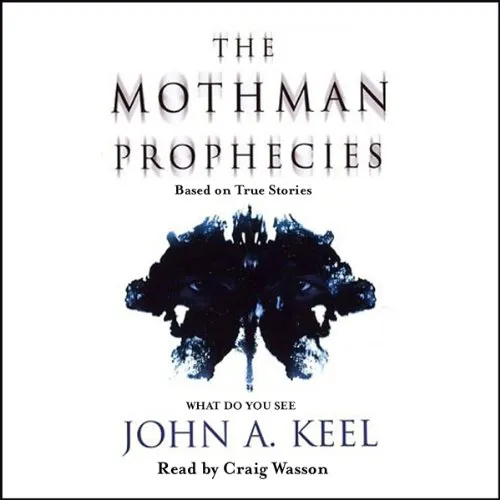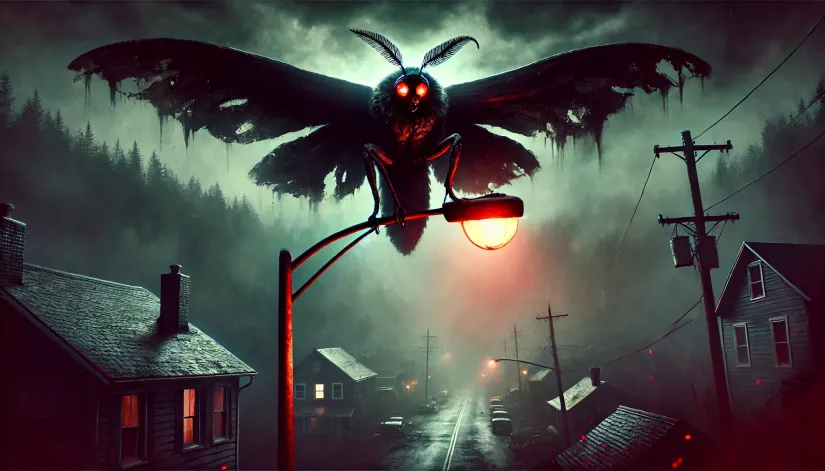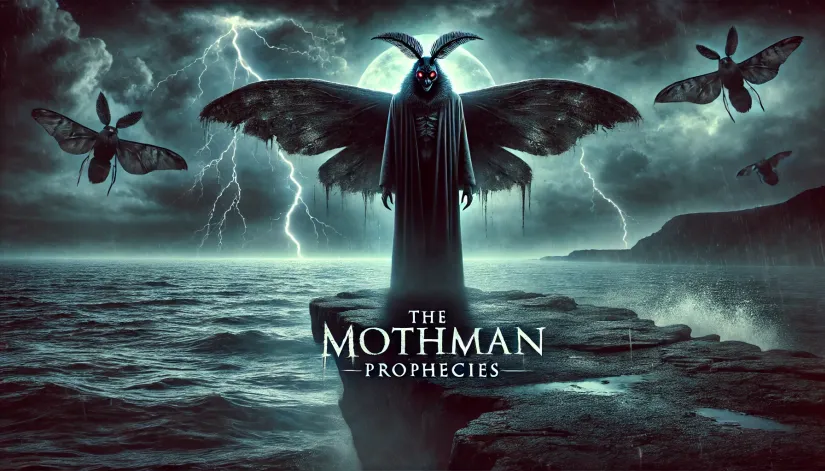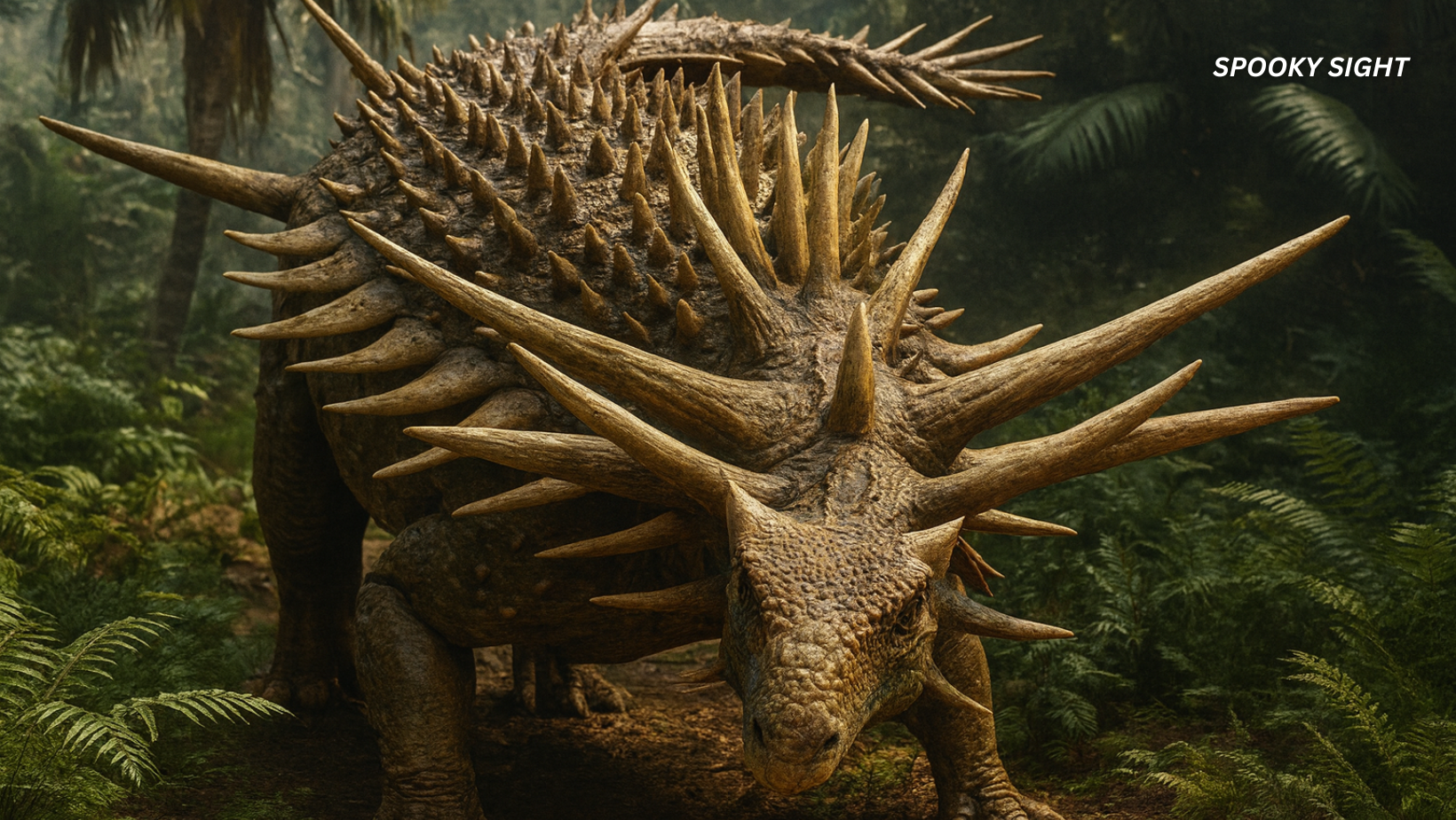In 1975, John Keel’s acclaimed book, “The Mothman Prophecies,” brought the mysterious Mothman cryptid back into the spotlight.
Keel’s book was well received because it didn’t just provide a straightforward recount of cryptid sightings. He also mixed in his personal experiences with tales of UFOs, conspiracy theories, and eerie prophecies, giving the story a supernatural twist.
Then, in 2002, the book was adapted into a film directed by Mark Pellington, starring Richard Gere. But how much of The Mothman Prophecies sticks to the original legend—and how much veers into Hollywood embellishment?
In this article:
The Mothman Prophecies (Book and Film)
At this point, every cryptid enthusiast has heard about the Mothman legend. First reported in 1966 in Point Pleasant, West Virginia, this winged creature with glowing red eyes was, for many, a harbinger of death and destruction.
For about a year, Point Pleasant was flooded with bizarre sightings. However, the real tipping point came with a tragic event—the collapse of the Silver Bridge in 1967. Naturally, many locals tied the two events together, and a new American urban legend was born.

The Book (1975)
John Keel’s “The Mothman Prophecies” reads like a paranormal thriller disguised as investigative journalism.
Keel wasn’t just reporting on Mothman; he dove headfirst into the world of UFO sightings, strange phone calls, and what he called “ultraterrestrials”—beings from other dimensions, not just outer space. According to Keel, the bizarre phenomena in Point Pleasant went far beyond a flying cryptid spooking the locals.
Keel claimed that he received mysterious phone calls—often garbled and cryptic—during his investigation that predicted major disasters. Most notably, Keel claimed he was warned in advance about the Silver Bridge collapse that killed 46 people in December 1967.
He linked these warnings to the strange occurrences in Point Pleasant, directly tying the Mothman sightings to the tragedy.
While Keel’s account is undoubtedly compelling, it’s important to remember his book blends genuine reports with his own speculative theories.
His connection between Mothman sightings and paranormal or extraterrestrial activity went far beyond the original eyewitness descriptions of a giant flying creature.
Ultimately, his unique mix of fact and fiction set the tone for “The Mothman Prophecies” film adaptation that followed decades later.
The Movie (2002)
When The Mothman Prophecies hit theaters in 2002, the movie leaned heavily into the psychological thriller aspect, focusing more on the unsettling, supernatural experiences of Richard Gere’s character (John Klein) than on the cryptid itself.
Rather than just documenting creature sightings, the film mixed in additional themes: premonitions, eerie phone calls, and Klein’s journey into Point Pleasant after his wife’s death.
The Mothman in the movie was more of a spectral figure capable of communicating through electronic devices—something not typical of the original Mothman reports from the 1960s.
The film also played up the idea of Mothman as a warning system for impending doom. It linked the entity with the eventual Silver Bridge collapse, making it seem almost like a harbinger of disaster.
While the real-life connection between Mothman and the bridge collapse was tenuous at best, the movie went all in, crafting a narrative where the cryptid was an ominous force tied directly to human tragedy.
What The Mothman Prophecies Got Right
Despite the dramatic and supernatural elements, both the book and the movie stayed true to some core aspects of the real-life Mothman story.
Here’s what they got right:
Fear and Paranoia
Both the book and the movie effectively captured the tension and unease that gripped Point Pleasant during the Mothman sightings.
Locals at the time reported a sense of growing fear—not just from strange creature sightings but also from a series of bizarre events (like UFO sightings and other unexplainable phenomena).
The movie nails this eerie, oppressive atmosphere. The protagonist, John Klein (played by Gere), feels increasingly isolated and haunted as he learns more about the strange occurrences.
Related: 16 Lesser-Known Mothman Facts: From Curses to UFO Connections
Keel’s book went even further in depicting the sheer weirdness that enveloped Point Pleasant. He documented reports from locals who claimed to experience unexplained phenomena beyond Mothman sightings—such as strange lights in the sky, mysterious phone calls, and odd visitors in town (often linked to the “Men in Black”).
The sense of paranoia was palpable, and both the book and movie conveyed that uncertainty well.

The Silver Bridge Collapse
One of the most significant real-life events tied to the Mothman sightings was the Silver Bridge collapse in December 1967 (13 months after the first reported Mothman sighting). It was an unspeakable tragedy. The whole county was in shock.
Interestingly, the Mothman sightings stopped right after the collapse. So, many locals retroactively tied the strange cryptid to the disaster.
Both the book and movie incorporated this real-life connection into their narratives.
Keel suggested that the Mothman sightings and other paranormal events were somehow warnings of the upcoming disaster. He based his theory on hundreds of hours of research and interviews.
However, the movie took Keel’s theory a step further. In the film, Mothman becomes an entity that foresees—or even causes—catastrophes.
Keel’s Investigative Approach
Keel’s approach to the Mothman story was unique because he didn’t just focus on the cryptid. He dug into more all-around themes of conspiracy, UFO phenomena, and other psychic events that locals claimed happened alongside Mothman sightings.
His investigative style—talking to locals, collecting eyewitness reports, and trying to connect seemingly unrelated events—was genuine and dedicated.
Both the book and the film leaned into this investigative element. Richard Gere’s character mirrored Keel’s approach by interviewing witnesses and trying to piece together what was happening in Point Pleasant.
While the film heightened the supernatural aspects, it still managed to capture Keel’s methodical process pretty well.
What The Mothman Prophecies Got Wrong
While The Mothman Prophecies introduced Mothman to a broader audience and got some details right, both the book and movie—particularly the cinema—took considerable creative liberties that strayed from the original reports.
Over-Exaggeration of Mothman’s Abilities
Both the book and the movie exaggerated Mothman’s role as an omniscient, prophetic figure.
In the film, Mothman communicates warnings through strange phone calls and electronic devices—like when Gere’s character records unsettling noises supposedly linked to Mothman. This portrayal leans heavily into the paranormal, turning Mothman into more of a supernatural entity than a cryptid.
In reality, most reports described Mothman simply as a creature—a large, winged being with glowing red eyes. There were no original accounts of psychic messages, electronic disturbances, or interdimensional abilities.
Mothman was frightening, sure, but it didn’t have supernatural control.

Mothman as a Harbinger of Doom
The movie strongly connects Mothman to the Silver Bridge collapse. Through complex warnings, the entity foretells the tragedy. This way, the film implies that Mothman IS directly linked to catastrophes.
In reality, the link between the Mothman sightings and the bridge collapse is largely speculative, coming after the fact. There were no credible warnings recorded before the collapse—the disaster was later traced to a structural defect in the bridge.
Fictionalized Supernatural Themes
The film’s biggest departure from the original Mothman story is its heavy focus on the supernatural. Unlike the genuine John Klein, the movie protagonist finds himself caught up in a bunch of bizarre, supernatural events—from strange prophecies to disturbing dreams.
The film mixes sci-fi concepts (like time distortions) with paranormal horror tropes. All to create a force that predicts or manipulates future events.
It’s also true that Keel’s original book DID explore UFOs (and other paranormal phenomena). However, it didn’t present Mothman as an interdimensional or demonic entity with power over space-time. The real-life sightings were much more cryptid-focused.
So, these dramatic embellishments—while entertaining—stray far from the straightforward creature accounts that eyewitnesses originally described.
Hollywood’s Dramatic Liberty
Like many Hollywood adaptations, “The Mothman Prophecies” movie takes considerable creative license.
This is especially evident in the bridge collapse scene, where Gere’s character gets directly involved. He heroically jumps into action, trying to save lives. In reality, no such heroic acts connected to the Mothman legend ever existed. The collapse was a tragic event that no one knew would happen.
Indrid Cold—a supposed extraterrestrial communicating with John Klein—also adds to the dramatics. However, this character wasn’t part of the original Mothman sightings. It was likely added in the film to simply bring in more sci-fi elements.








